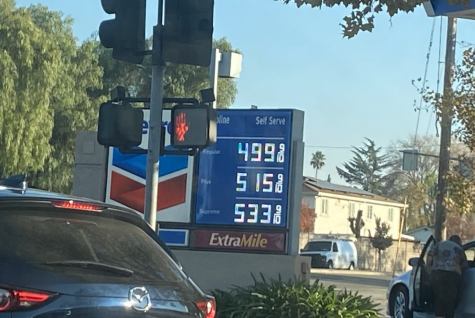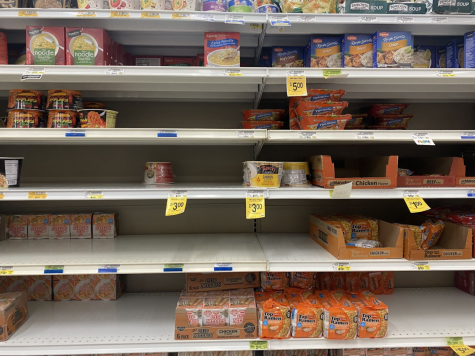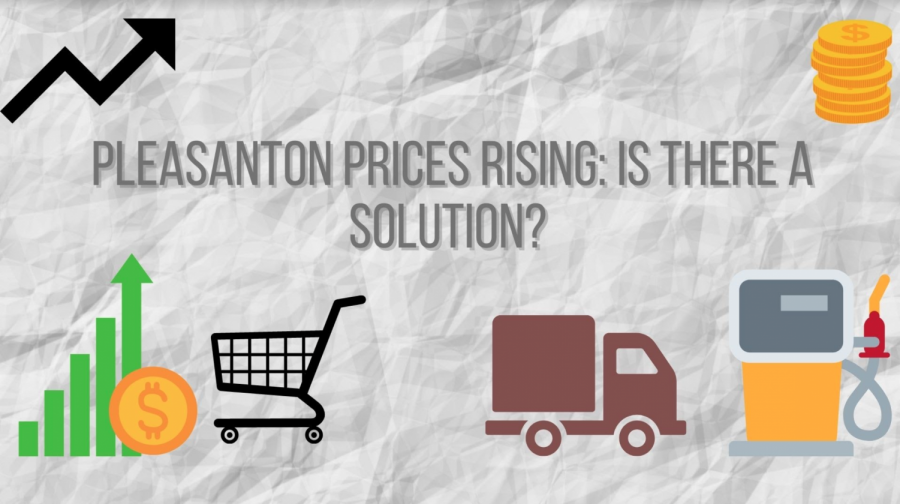Pleasanton recovering from COVID
Prices rise amid supply chain shortages and inflation
While shopping, many Pleasanton residents have noticed the rising prices. Why is this happening?
Almost two years after the first COVID case, everyday life has begun to return to normal. Although COVID cases have dropped, prices have risen.
“The price of meat has skyrocketed and the prices of just random things have gone up. So across the board, everything is up. Our grocery bill when we had six people living in the house is roughly the same as a family of three, so it is a problem for many people,” said Amador Valley parent and Pleasanton resident Jim Clark.
Everywhere, from the local grocery store to Costco, prices have begun to rise. It won’t stop there, with prices expected to rise almost 10% more in the coming days.
“It seems like I’ve seen a little bit of price increases at the stores, sometimes basic products are 30 or 40 cents more, but if you are shopping for a lot, it really adds up,” said Noah Cole (‘23).
Over the past two months, supply chain shortages disrupted shopping throughout the country, driving up prices with a shortage of supplies. The cause of the problem? The attempted return to pre-pandemic levels of economic activity.
Supply chain shortages
The shortage of truck drivers and warehouse workers all around America impacted the nation’s local groceries stores. Pleasanton residents can see the aftermath, with grocery prices noticeably rising.
“You can see meat and vegetables’ prices increasing sometimes. Frozen vegetables seem to be a problem, and little things as well. Little coin batteries and things that people use for everyday use have had shortages. Fortunately, most of the staples have been consistent,” said Clark.
Higher demand with low supply mixed with a huge backlog of cargo ships carrying goods means higher prices and massive inflation.
Inflation rates rise
Supply chain shortages and COVID have also resulted in inflation — more than 5% this year, 2.5 times the target set by the federal government. This number is not going down soon.
“This inflation is worrying. As people look at their bank accounts and they see what they make per hour and they see their retirement accounts, and they see them going up, and they are happy with that. Unfortunately, with inflation going up, our money has never been worth less, so not only are prices going up, their prices are just not worth the same,” said Clark.
This mixture of inflation and increasing demand also results in rising gas prices — especially in California.
Pleasanton gas prices skyrocket

Local gas prices have drastically increased in recent months. Amid rising grocery prices and inflation, gas prices in Pleasanton reached over five dollars recently.
“Each time I go to the gas station, now it is over 100 dollars which really breaks my bank, so it is pretty rough because it is a third of my paycheck every two weeks,” said Scott Garman (‘23).
Rising crude oil prices and increased demand for gasoline caused such inflated gas prices. As more people began to venture outside with COVID cases dropping, demand for gas increased, driving up their prices.
“The price of gas is significantly higher. I’ve never seen it this high, and it has never been this high in my lifetime. Compared to a year ago where it was a dollar cheaper than the national average, it can change and it impacts the price of everything we buy,” said Clark.
Although gas prices have risen all throughout the country, national prices have stabilized. California’s gas prices, however, have continued to skyrocket due to state taxes: car users pay over 85 cents per gallon in taxes.
“I drive my car a lot. So probably once every week or two I have to go to the gas station, so it costs a lot of money. The price increase does hurt,” said Garman.
Is there a solution?
Many economists predict that the supply chain crisis will not end by the new year, extending well into 2022. It has already affected holiday shopping.

“I definitely noticed price inflation. Some products I maybe would have bought last year but I’m not buying this year because they are really expensive for this year’s holiday shopping. There are also shipping delays. One thing I ordered took two or three weeks, and it said it was a couple of days,” said Cole.
The Biden administration, however, has announced that the supply chain crisis will not affect holiday shipping after meeting with business executives. Ports have begun to free up, and companies raised wages for truck drivers by over 21% to try to combat employment problems.
“Over the past few months, I’ve seen the prices have been around flat. It hasn’t gotten worse, and it hasn’t gotten better. You can now find different things in stores, like the coin batteries, but the cost just keeps going up,” said Clark.
Your donation will support the student journalists in the AVJournalism program. Your contribution will allow us to purchase equipment and cover our annual website hosting costs.

